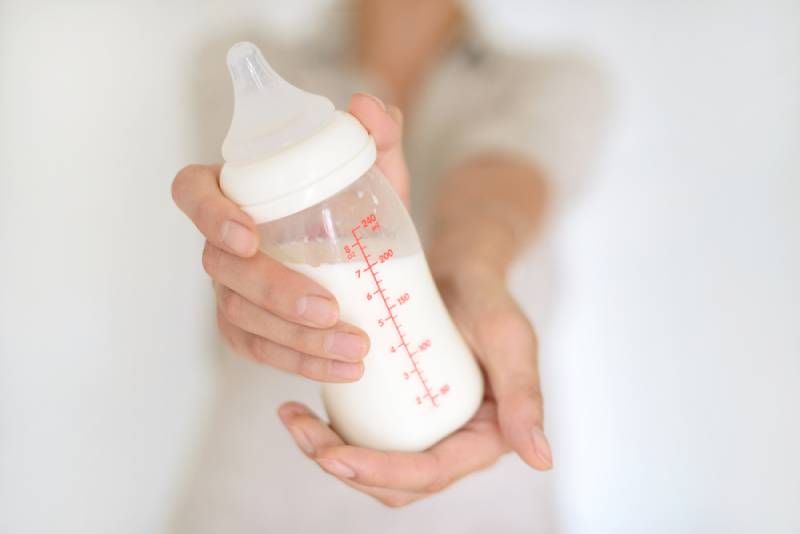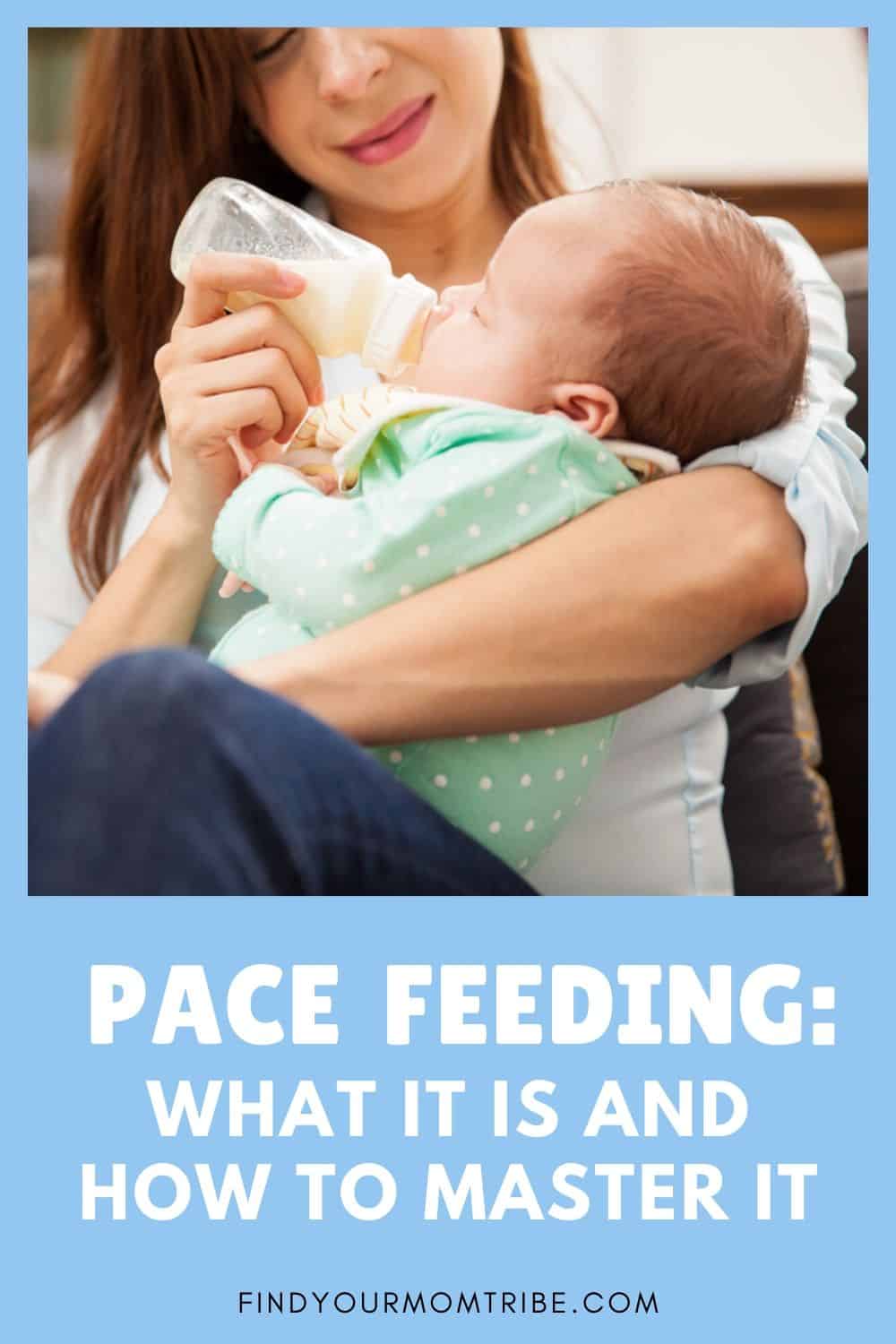Motherhood is a demanding job. For first-time mothers, taking care of a new baby can be challenging. Plus, new moms have to learn a whole new vocabulary, like breastfeeding, feeding methods, pace feeding, bottle feeding, feeding technique, diapering, overfeeding, colic, etc.
You are unlikely to find anyone familiar with these terms before they become a parent. So, if you’re a new mum, you’ll really want to know why these terms are important in your initial months of parenting and why you need to know about them.
Bottle feeding is a common practice found everywhere in the world. Mums who are not able to breastfeed or don’t produce enough milk have no other option than to bottle feed. Pace feeding is a related term that can help new moms to have a better breastfeeding experience so they can continue with it.
Or those who are struggling with milk flow or latching techniques, leaving baby half-fed, can use the method to help find some relief.
A lactation consultant is the best advisor to help new moms learn how they can latch their baby, but it can take time to create those breastfeeding relationships and discover how breastfeeding a baby can be the most precious satisfying experience for a mom!

It’s known that there is a high chance that a bottle-fed baby might not latch well when trying to breastfeed.
Even though exclusive breastfeeding is highly recommended, in reality it’s not always practical and doesn’t suit every individual.
In addition, postpartum depression and stress can further affect the milk supply of a breastfeeding mom.
Sometimes, a new mom can get confused about whether she should exclusively breastfeed or not. Giving a bottle might take away from, or reduce the breastfeeding experience.
Or how about the mum who doesn’t have much maternity leave and will be returning to work soon after delivery?
They won’t be able to breastfeed exclusively, so bottle feeding may be the only option. Pace feeding can help mums to avoid some of their fears!
What is pace feeding?
As you know, when you breastfeed, your baby has to work hard to get the milk.
The speed at which the baby gets milk is slow, but over time the baby gets used to working hard. A rhythm develops between mum and baby.
When you switch your baby to bottle feeding, the rhythm changes and the baby gets more milk with less work.
This can lead to overfeeding and the baby refusing to breastfeed. Pace feeding closely mimics breastfeeding and is a method of bottle-feeding a baby with a controlled feeding pace.
During pace feeding, the baby sucks the bottle at the same pace as breastfeeding and receives less milk, quite contrary to normal bottle feeding.

Why pace feeding is important
Overfeeding may result in discomfort and related problems in the baby. Breastfeeding has numerous benefits and the baby learns how to control feed.
A breastfed baby knows how to satiate their hunger and not overfeed themself. It’s a slow process and as the baby grows, they learn how much milk is enough.
Bottle feeding is the opposite. There is no control and the baby finds bottle sucking much easier than breastfeeding as it is less hard work and provides more milk.
So, to ensure a balance between bottle feeding and breastfeeding, pace feeding is important.
It provides the right way of bottle feeding without affecting breastfeeding, can be done in between without any worries, and can be used easily once the baby shows feeding cues.

Benefits of pace feeding
As pace feeding is similar to breastfeeding, it helps mothers to breastfeed for longer.
Paced feeding encourages breastfeeding and provides a little break for exhausted mothers who are breastfeeding exclusively.
So, it works both ways, which is why every mum should practice this in order to have a better feeding experience.
It also minimises colic and frequent choking, which is common in bottlefed babies.
Also, because there is less chance of overfeeding, there is also a lower chance of the baby becoming overweight.

Helps to reduce colic issues
When a baby cries for a prolonged period for no reason, this is known as colic.
Generally, babies cry because they are hungry or have gas, but when a baby cries continuously for more than 3 hours a day for more than 3 days a week they are said to be suffering from colic.
Pace feeding helps a baby to have control over their hunger and to satiate it accordingly. This helps to reduce the symptoms of colic.
Bottle feeding, on the other hand, may aggravate the chances of colic.

Aids breastfeeding
Breast milk keeps a baby healthy. It works as an immunity booster and helps a baby to fight against allergies, sickness, and infections.
Also, mom bonds with her child while she breastfeeds and contributes to the most important aspects of brain development.
However, sometimes medical conditions make it more challenging for a mom, which may affect exclusive breastfeeding.
Or, a mom who has limited time before she returns to work may face a breastfeeding challenge.
Pace feeding helps new moms to find a balance in their breastfeeding journey.

Controls hunger
A baby always gives a cue when they are hungry.
However, crying or putting fingers in the mouth is common in babies and it can be difficult for new moms to know whether their baby is hungry.
Pace feeding helps the baby to control their hunger and feeding.
They learn with time. Therefore, it’s vital that one should focus on pace feeding rather than bottle feeding, which is entirely different.
The baby learns how to control themself, rather than having their hunger controlled.

How to pace feed a baby
- Take a small bottle with a slow-flow nipple.
- Hold your baby in a semi-upright position (wrap them well).
- Don’t forget to support the head and neck with your hands.
- Once your baby shows signs of hunger (hunger cues) or fussiness, insert a nipple into
- the baby’s mouth.
- The latch on the nipple should be like in breastfeeding, which is also not a fast flow.
- Please hold the bottle flat – it should be horizontal to the floor.
- Once the baby starts sucking, tip the bottle halfway.
- The baby should have 3-5 continuous swallows in 20-30 seconds.
- In between, give the baby a break.
- Continue the pace feeding until the baby shows signs of fullness.
- The baby might turn their face, pushing the nipple out.
- This must be practised several times and gradually babies will start to learn how to pace themselves.

Positioning your baby
This is one of the most important aspects of pace feeding. The position of the baby matters, as this will enable the baby to suck fast or slow.
The baby shouldn’t sit at a right angle, but rather slightly reclined with good support to the neck and head.
As the baby’s neck is delicate, it’s important to provide it with good support so that the baby is comfortable while sucking milk.
Also, the right position will help to control the flow of milk, helping the baby to suck better.

Burping your baby
Babies sleep most of the time and rest on their back. While you lift them for feeding, you should make sure that you help them to burp.
Post feeding, hold them upright, support their back and neck, and rub gently on their back. Once you hear a burp sound you can help them sleep, or lie them down.
This helps the baby to digest, and reduces vomiting.

Feeding breaks and switching sides
A baby needs to be fed from both breasts. This is helpful for both mom and her baby.
So, switching sides while feeding is common for babies and the same logic needs to be implemented while you pace feed.
A baby shouldn’t feel much difference in both techniques. Taking a break and switching sides will help the baby to know whether or not they need any more milk.
A break of just a few seconds will help their sucking muscles to relax before the next cycle.

How bottle feeding can be harmful
Not everyone knows that bottle feeding can be detrimental to a baby’s health. The flow at which milk goes into the baby’s mouth is much faster than during breastfeeding.
This can lead to overfeeding, crankiness, gastric problems etc.
Pace feeding is the best alternative for breastfeeding moms as they don’t need to worry about nipple change or creating confusion for the baby.
The process of pace feeding is way better than conventional bottle-feeding and helps mom to stress less.
She can even breastfeed the baby as she continues to try her hand at pace feeding.

Nipple confusion
Bottle-feeding comes with fear of nipple confusion. Previously, a mom would breastfeed continuously, until there was some medical emergency or she had limited time to feed.
There was always a fear behind switching to feeding with a bottle.
What if the child stops taking breast milk, even when the mom wants to continue breastfeeding? Pace feeding reduces nipple confusion and a mum can feed her baby in both ways.
This is because the baby’s lips needn’t suck in two different ways. It can also help a new mom to combat her postpartum blues and give her a break from time to time.

Patience
There is no quick fix when it comes to parenting. Every new routine or habit you want to develop in your baby takes time.
The same is applicable to pace feeding. Please don’t expect your baby to be able to take more than one feed on day one.
Slowly, the baby will learn and you can add on feeds. So, a new mom and her helping hands need to be patient while they feed the baby.
With practice, the baby will learn how to control their feeds and hunger pangs.

Myths around pace feeding
Pace feeding is a slow process of feeding a baby by holding the bottle horizontally.
With this process, there is always a space between the baby’s mouth and the nipple, making parents worry that the baby is sucking more air in between gulps.
But the fact is that more air is taken in when the baby is bottle-fed. The in-between breaks allow a baby to suck as per the required time.

Many parents associate gas with bottle feeding.
This might be true in the case of bottle-fed babies as they generally overfeed compared to pace fed babies. Indigestion is mainly a result of overfeeding or improper feeding.
Pace feeding helps parents to have control over the baby’s appetite and feeding.
Pace feeding also helps to reduce the risk of cavities.
If you notice, bottle-fed babies hold their bottle straight with no gaps, accumulating milk in the mouth which can lead to cavities at an early age.
There is no risk associated with either breastfeeding or pace feeding methods.
Because the process is slow, milk never accumulates in the mouth, reducing the risk of later oral hygiene problems.
Like this article? Please share or pin it for later. You can also stay in the loop and follow me on Facebook, Instagram or Pinterest.

This post contains affiliate links. Please see our full disclosure for more info.

